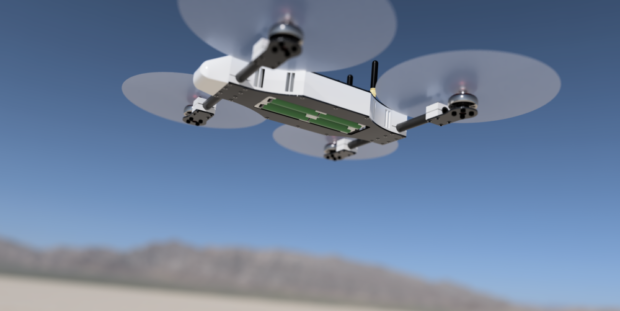Autonomous Flight Technologies, Inc. has developed and prototyped an American made target drone designed to be utilized in CUAS testing named T.H.R.E.A.T (Tactical High Reconnaissance Aerial Evasive Target).
Basically, instead of companies shooting down consumer rated drones from China, our system, having been designed and manufactured in the USA, can be flown over federal test sites… at roughly half the price. The company’s initial target audience is prime contractors with the goal of becoming Blue compliant under the DIU.
T.H.R.E.A.T. was developed in order to provide a low cost, secure, and Bradley compliant manufactured testing platform for counter sUAS solutions. Today’s battlefield is experiencing an unprecedented amount of off the shelf UAS equipment being deployed for offensive and reconnaissance roles. To combat this, the U.S. Department of Defense has issued several calls to action for prime manufacturers to develop countermeasures.
Numerous acts such as H.R. 4682 – UAS Act (2021) prohibit certain foreign manufactured equipment from being “operated, financed, or procured” by all DOD or DOD prime contracting corporations for any use. Certain acts explicitly name DJI (China), the most renown sUAS manufacturer, as the top prohibited cyber threat due to many features including cloud storing technology. Although DJI raises the majority of security concerns by the DOD, they remain the most popular. From Syria to the Ukraine, the Phantom continues to be the most widely used platform for both reconnaissance and offensive measures.
The target was designed to mimic the most popular DJI sUAS platform. From propulsion systems to aerial signature and flight characteristics, our aircraft performs almost identically when flown side by side with the Phantom. Where as the Phantom is dependent upon cloud system technology, we designed T.H.R.E.A.T. to perform its missions without the use of any video equipment or internet access keeping the sUAS completely air-gapped from any outside entity.
It was developed in order to provide a low cost, secure and US domestically manufactured solution for testing anti-UAS weapon systems currently being developed to counter the next generation of battlefield drones. Almost all of the available commercial sUAS system are not domestically manufactured, and those that are often have foreign ties that limit their use for the intended task.
Data security
Cloud services and “always connected” features are a direct concern and simply cannot be brushed aside when dealing with national security technologies and their development and testing. Flight, telemetry, and payload data is not reliant upon being connected to the internet or a cloud-based service. It is point to point between the aircraft and ground station. The data stream is also encrypted for complete security.
Low cost and green.
All materials are sourced based on keeping costs low, as well as utilizing recycled plastics. By reducing cost, budgets for expendable targets can be stretched to allow for more testing within a static budget.
Power System
- Utilizes common, easily sourced, 18650 Lithium-Ion battery cells. Does not require proprietary battery packs or chargers. If needed, chargers and battery cells can be sourced locally by the end user.
- Lithium-Ion batteries contain numerous safety features that are not present in Lithium Polymer batteries. If pushed past their limits, these safety features help prevent thermal runaway events and uncontrollable battery fires.
- Lithium-Ion batteries provide long duration flight for their size and weight compared to LiPo batteries, but at a lower intensity. Trading high performance for flight duration allows this sUAS to fly farther and stay on station for extended durations.
Airframe
- Low overall parts count consisting of carbon fiber plate and tube, as well as 3d printed components.
- 3d printed components are made from recycled plastic presenting low environmental impact
Flight Control System
- It can be flown via hands on radio control, ground station with telemetry data link, or a hybrid of both.
- Flight profiles can be preprogrammed and uploaded to the FCU for repeatable missions.
- When using the ground station with telemetry link, flights can be reviewed by replaying the log within the ground station interface.
Payload
- The base model is simply a flight capable airframe with localization and telemetry capability. When live video is not required, or security is of prime concern, the lack of a video device is a major plus.
- Optional video payloads include:
- Traditional RGB FPV using 5.8GHz, 1.3GHz unencrypted analog transmitters.
- HD digital RGB, NDVI and thermal using encrypted digital transmitters.
- Other payload options available upon request within size and weight limits.
Source: Press Release/website

